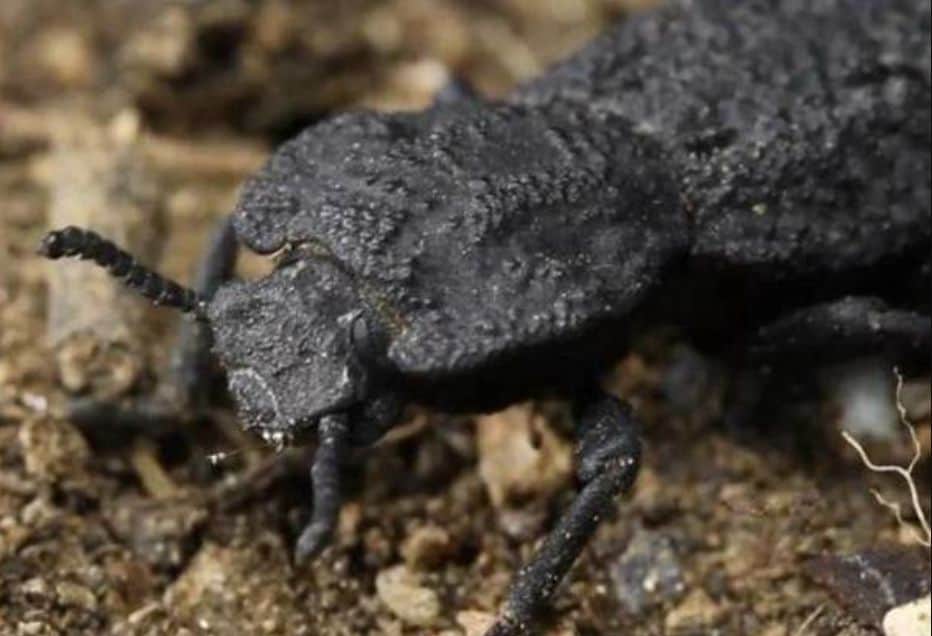The exoskeleton of the so-called ‘diabolical armored beetle’ is one of nature’s toughest materials. Now, scientists have finally managed to figure out the reason behind the impressive resistance of this insect’s shell.
Scientists have found that the design features of its shell are responsible for the extraordinary strength of the Nosoderma diabolicum beetle. First, the seam between the elytra and the lower part of the exoskeleton has different rigidity, which allows it to bend without harming the organs. Secondly, the two fused elytra are connected according to the groove-ridge principle with several ridges, the layered structure of which allows not to burst, but to exfoliate, and thereby distribute the load.
The development of technology can be simplified if you use ready-made solutions that already exist in nature. Sometimes engineers even make zoo-like robots, such as a mechanical crab to explore the seabed, or a squid robot to help oceanographers. Often, however, not the whole organism is borrowed, but some of its organ or principle of action. So, the brain of the locust, despite the primitive device, effectively avoids collisions with congeners in flight, and engineers have made an electronic device with a similar principle of operation.
The armored beetles of the Zopherinae family are distinguished by a very strong shell, especially the “devil beetle” Nosoderma diabolicum. This beetle lives under the bark of trees and can be mistaken for a small pebble due to its uneven and hardback. Its shell is so strong that it not only protects against predators but also allows it to survive the hit of a car.
Jesus Rivera of the University of California and his colleagues decided to study the shell of N. diabolicum and find out why it is so durable. First of all, scientists measured what kind of load it can withstand. When squeezed from the back, the carapace can withstand a load of up to 150 Newtons (for comparison, few people can press their thumb on their forefinger with a force of more than 60 Newtons).
Then the researchers analyzed the structure of the shell: the beetle lost its ability to fly, and its elytra were fused with each other and with the chest. Potentially, the boundaries between different parts of the shell are a vulnerable spot, but in N. diabolicum, the sutures, on the contrary, make the structure more reliable due to the differentiated rigidity. The connection of the elytra with the chest changes along the entire length of the body in such a way that in the area of vital organs it reaches a peak of rigidity, and near less important parts of the body it allows the carapace to bend without damage to the seam, and thus redistribute the load. In the safest place, the dorsal part of the exoskeleton is not rigidly fastened to the chest, and its crushing helps to absorb the energy of impacts.
The two elytra are connected by an integral groove-comb connection and vaguely resemble the way puzzles interlock. This combination is common in many beetles, but N. diabolicum has two key characteristics. First, its dorsal seam has two ridges. Computer simulations have shown that an increase in the number of ridges makes it possible to distribute the load more evenly, and field experiments with similar structures printed on 3D printers have confirmed this. Secondly, the ridges have a layered structure, but when fractured, the layers begin to diverge, remaining connected with the help of fibers. Thus, the seam does not burst, but gradually gives way, and with each retreat, the load is slightly reduced, which allows maintaining the overall integrity of the shell due to minor damage.
The authors of the work decided to check whether the structural features of this heavy-duty beetle can be applied in practice. They made several CFRP parts with a joint similar to the N. diabolicum dorsal seam and compared its strength to the Hi-Lok latch used in aircraft construction. Scientists argue that the biosimilar design can withstand 20 megapascals more pressure and is better able to handle peak loads.
The article was published in Nature.
